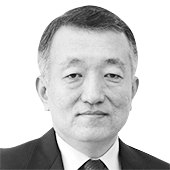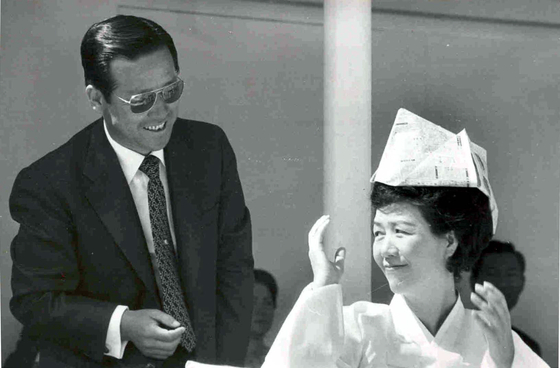How the first lady should act

Koh Hyun-kohn
The author is the executive editor of the JoongAng Ilbo.
Much of Seoul and the adjacent Gyeonggi area were inundated with heavy rainfall on the night of July 3, 1968. Some 300 residents of Jamwon-dong in southern Seoul had to take shelter in an elementary school in the neighborhood. The refugees received a surprise visit in the middle of the night. A woman crossed the muddy playing field in the heavy rain and walked into the school where they were staying. Some immediately recognized the inconspicuous visitor clad in simple hanbok (traditional Korean garb) and wearing rubber shoes stained with mud. First lady Yuk Young-soo sympathized with the refugees who lost their homes and handed out relief packages. She crossed the Han River in a wooden boat despite the heavy rain and dark night.
In contrast, the Honam region in the south grappled with a lengthy drought that year. The first lady arrived at that troubled site as well. She stomped across the dried-up fields and found a rusty water pump. She started pumping the machine that only spat out dust and squeaky sounds. Villagers began to crowd around her. She was in tears, lamenting about how she could not be of any help.

Whether she was of great help or not, the first lady never stopped acting altruistically. She visited all the dreary places like orphanages and elderly care centers. In the year-end party of senior government and ruling party officials in 1967, the first lady was missing. When asked where she was, President Park Chung Hee casually said she had to be with the orphans. A volunteer group the first lady had founded was famous for caring for leprosy patients, segregated in 87 places across the country. She was seen at leper colonies, holding hands with patients without wearing gloves and sharing meals with them.
The first lady was also famous for her modesty and plainness. Former lawmaker Lee Ae-joo had been a nurse at Seoul National University Hospital where the first lady was carried in after being shot in an assassination attempt on her husband at the Aug. 15 Liberation Day ceremony in 1974. She recounted that the inside of Yuk’s hanbok had been stitched up by hand many times. Mourners’ tears grew upon remembering the late first lady’s humble character. Although she was in the most glamorous position, she kept the presidential residence modest and frugal. She never wore expensive clothing. She even disallowed flower arrangements at the Blue House. President Park remembered how his wife had never spoken a word about doing something for herself.
Yes, those were the days when Korea was impoverished. Still, the first ladies in poor countries could be lavish. Imelda Marcos, the first lady of the Philippines around the same time, fully capitalized on the lengthy dictatorship of her husband. She was famous for her collection of over 3,000 expensive shoes. The first lady of the Korean dictator was the opposite. Her secretary remembered that Yuk had always taken care that she did not appear self-important, to the extent that she avoided sitting back in a chair at public events.
The first lady knew well when to interfere and when not to. She never stepped into the presidential realm of state affairs and appointments, but she minded the civil complaints the president had no time to check. She read more than 50 letters that arrived at the presidential office a day and wrote back. She gave strict orders not to touch the letters that were addressed to her. After reading a letter from a boy living meagerly in a mountain cave in Dobong-dong, northern Seoul, she combed the place to find him. When she finally did, she gave him money to start an ice cream stall business.
The first lady made sure that personal affairs did not get in the way. She spoke honestly to her husband as if she were the opposition. A relative of the president caused a fatal car accident. While others tried to keep it a secret, she told her husband and the relative was arrested. Former prime minister Kim Jong-pil, who was linked to the president through a marriage, referred to the first lady as the first person who demonstrated to the people how a first lady should behave.
Those who fought against the dictator had all admired his wife. The late Cardinal Stephen Kim Sou-hwan — the symbol of the democratization movement during the 1970s — attended the funeral of the first lady and prayed that “the seeds of peace and love she had sown in our hearts could blossom even after her passing.” In his memoir, the cardinal recalled that Yuk was worthy of the title as “mother of the nation.” She effectively diluted the strongman image of her husband during the fearsome period of his dictatorship. It could not be a coincidence that the president’s command began to crumble after her death in 1974.
There have been many first ladies since, but there were none who could match her. Lee Hee-ho is remembered for her devotion to democracy together with her husband and dissident-turned-president Kim Dae-jung. But none had carried out a first lady’s role in her husband’s government. We terribly miss her as we start the New Year with the growing risks of the first lady with the incumbent president.










with the Korea JoongAng Daily
To write comments, please log in to one of the accounts.
Standards Board Policy (0/250자)